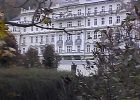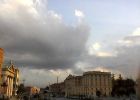Um alfabeto de azuis e amarelos
In the interview “Um alfabeto de azuis e amarelos” (An alphabet of blues and yellows) published by the magazine “Superinteressante” in November 1988, Flusser discussed his theoretical position. The problem with spoken and written languages is that they are inadequate to describe the world, which could be described much better in mathematical terms. However, the problem with numbers is that they are separated from each other by intervals. Colours, on the other hand, tend to blend into each other.
Small Data Photography. Mit weniger Daten mehr erfahren
Everybody is snapshooting, everywhere. Flusser’s statement in his Toward a Philosophy of Photography from 1983 is even more significant forty years later in our brave new world of smartphone pictures. Is it possible to overcome the abundant redundancy of digital colour photography by using the same device, a mobile phone? In her experiments against the apparatus Vera Schwamborn developed what she calls „Small Data Photography“ as an answer. It is amazing that 480 x 640 pixel image on a small Nokia mobile can result in irritating and informative photographs opening a path to regain the world around us by small data. Flusser tried to combine aesthetics and technology as a way to bring back sensual experience into our abstract environment of calculus and computation. Together with Karl Gerstner he developed ideas of a colour code parallel to the all-embracing number codes of our time. Small Data photos also offer a reconciliation. They disclose a world of images that lie before the text and beyond the number.
Spotlyrics / NonDigitColors
The NonDigitColors project is based on a text by Vilém Flusser from 1991, “The Emigration of Numbers from the Alphanumeric Code.” . In this text, Flusser evokes, among other things, the fall of the alphabet: “The alphabet is about to be crushed by numbers on the one hand and images on the other hand, as by a pair of pliers.” The RGB (red-green-blue) system that determines color on most computer screens is hexidecimal: from sixteen available characters, it uses a six-character string to deliver any individual color, preceded by a pound sign (#). The project NonDigitColors uses a code of 6 letters: a, b, c, d, e, f to make up character strings. There are 46656 different permutations, or words or signs that become color values by the addition of the # sign. NonDigitColors are computer color codes that, paradoxically, do not consist of numbers. When the numbers “emigrate” from the hexadecimal code, only the “non-digital” codes remain.
The depiction as code establishes color as a linguistic construct. The project Spotlyrics refutes Flusser’s above-mentioned assertion and claims a place for letters in a modern, computerized, future-oriented world.








